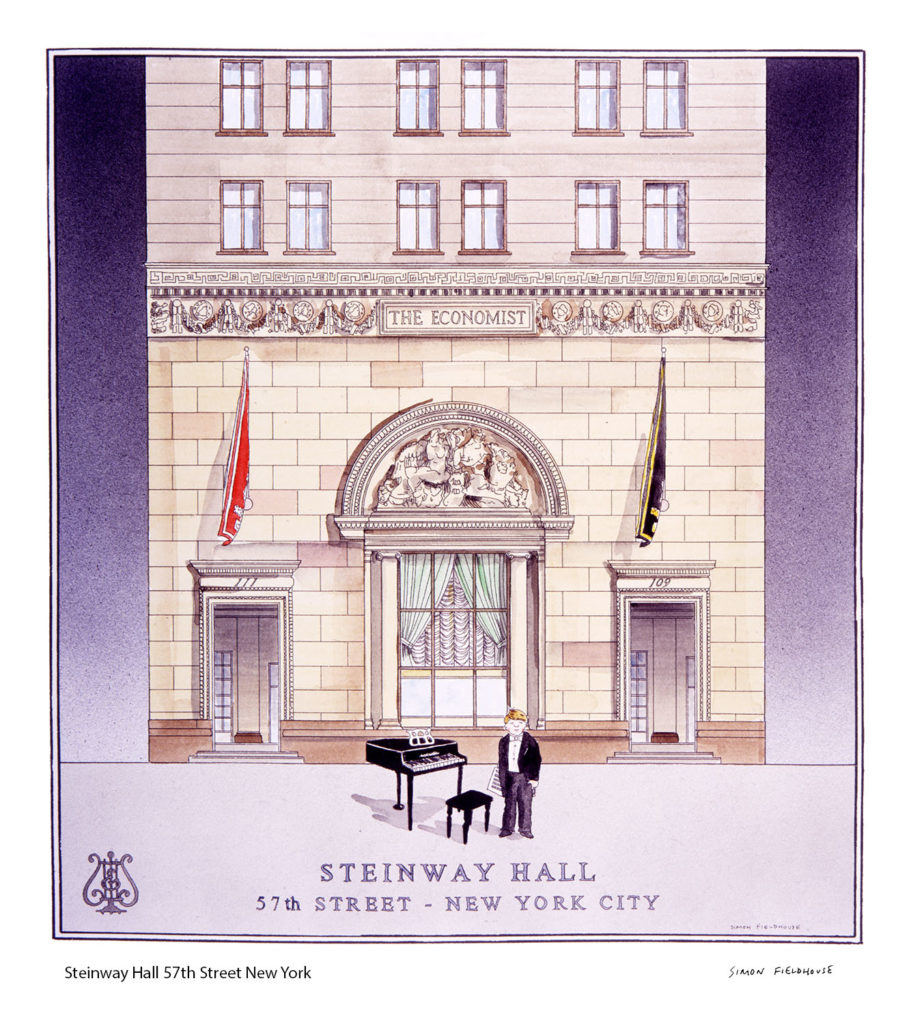
Steinway Hall 57th Street New York
Steinway Hall 57th Street New York opened on January 11, 1925 across the street from the Carnegie Hall at 109-113 West 57th Street, between Sixth Avenue and Seventh Avenue in New York City. The new Steinway building replaced the old Steinway Hall, which was closed in the same year.
Steinway & Sons sales and marketing departments saw business benefits in having their piano showrooms near Carnegie Hall. Steinway pianos were played at both the intimate New Steinway Hall and the cavernous Carnegie Hall across 57th Street. The New Steinway Hall also introduced its own recording studio and technical equipment to broadcast classical music over the radio. The official opening night was on October 27, 1925 with a performance by Willem Mengelberg and 35 musicians from the New York Philharmonic before 300 invited guests of New York society. The entire performance was broadcast over the radio. Among the invited guests were musicians, media, industrialists and politicians.The Steinway family was represented by Frederick T. (Steinway & Sons president until 1927), Henry Ziegler, Theodore E. (Steinway & Sons president from 1927-1955), and William R. Steinway; all were grandchildren of the company founder Henry E. Steinway. Among other notable performances at the new Steinway Hall was the 1928 duo piano recital by Vladimir Horowitz and Sergei Rachmaninoff.
In 1958, Steinway Hall was sold together with the land, and Steinway & Sons rented the rooms. In May 1999, Steinway bought back the building for approximately $62 million, but the land could only be rented for 99 years from the former owner who chose to retain ownership of the land.
Steinway Hall on 57th Street was designated a registered historic and cultural landmark in 2001.The building was designed by Warren & Wetmore.The exterior features a bas-relief of Apollo and a musical muse by Leo Lentelli located in the lunette above the grand window at ground level. The main room, a two-story rotunda, features high domed ceilings, handpainted by Paul Arndt. The interior design is appointed with marble and portraits of composers and concert artists. Some valuable paintings are showcased throughout Steinway Hall, by such renowned artists as Rockwell Kent, N.C. Wyeth, Leopold Seyffert and Charles Chambers. Next gallery celebrates five generations of Steinway memorabilia, including design innovations, awards, and "fan mail" from luminaries like Thomas Edison. The main rotunda seats up to 300 guests and a small symphony orchestra. The showrooms are covered with wood panels for better acoustics. Steinway Artist Department, Steinway's sales and marketing departments, as well as the Steinway Service Department, are still operating in the same building. In the basement of Steinway Hall is a concert grand piano bank: an exclusive collection of Steinway concert grand pianos, maintained for the use in live concerts as well as for studio recordings by performing artists.